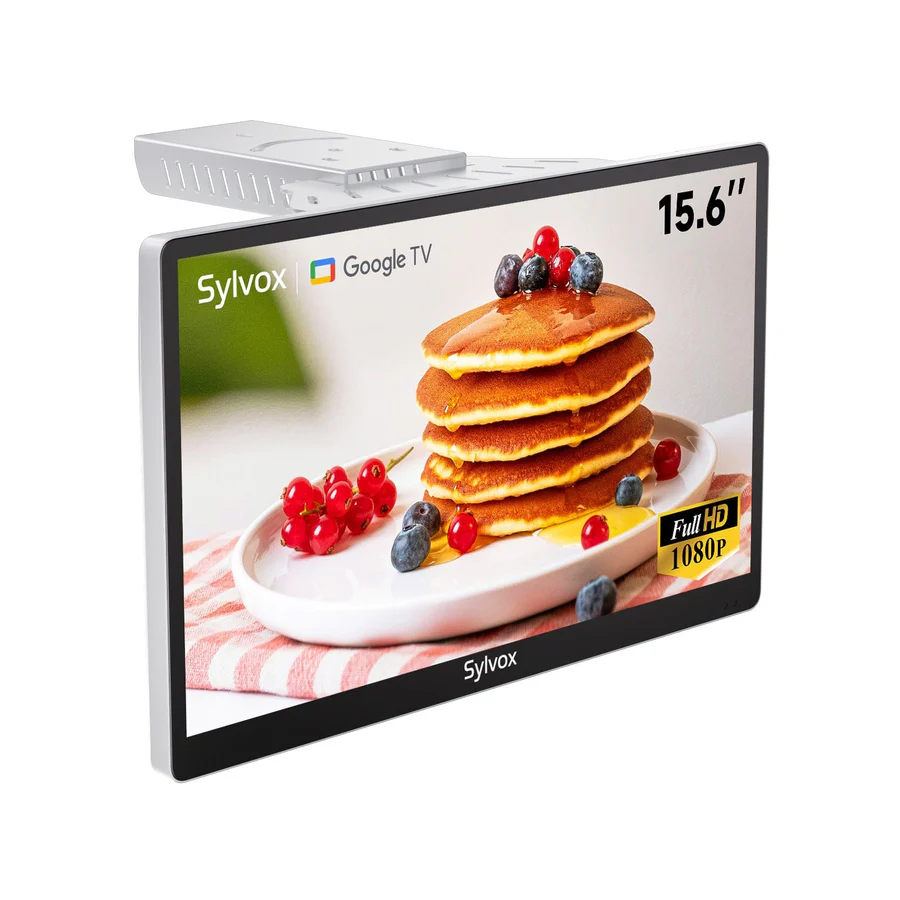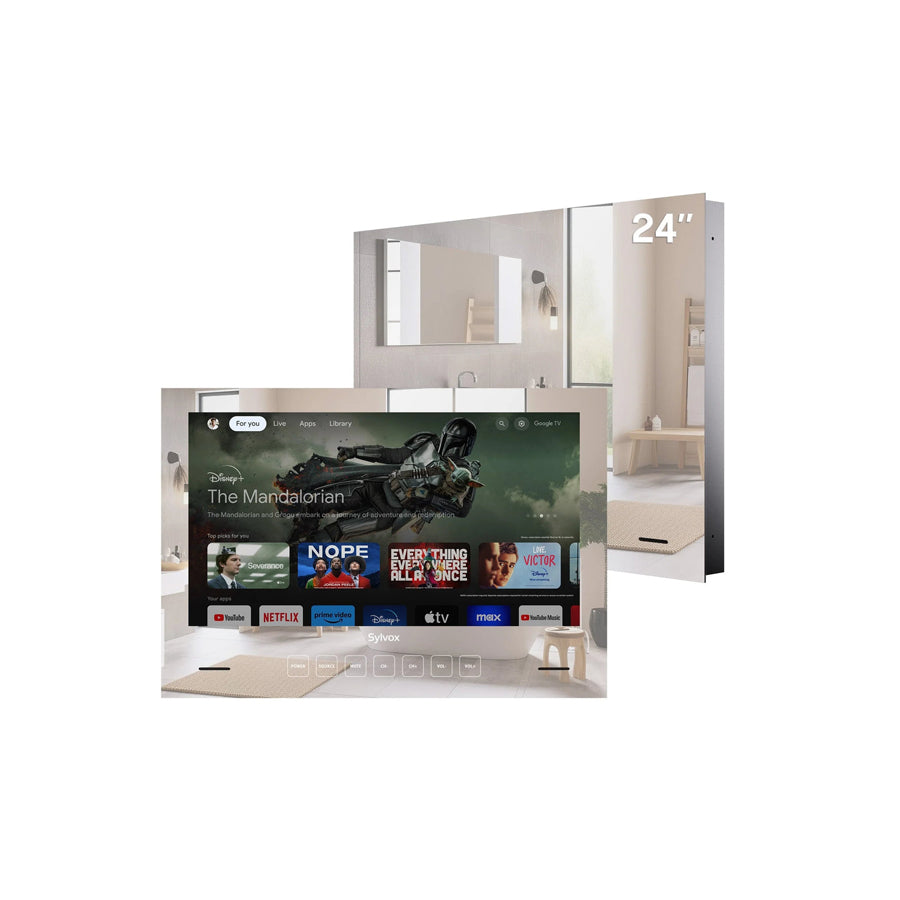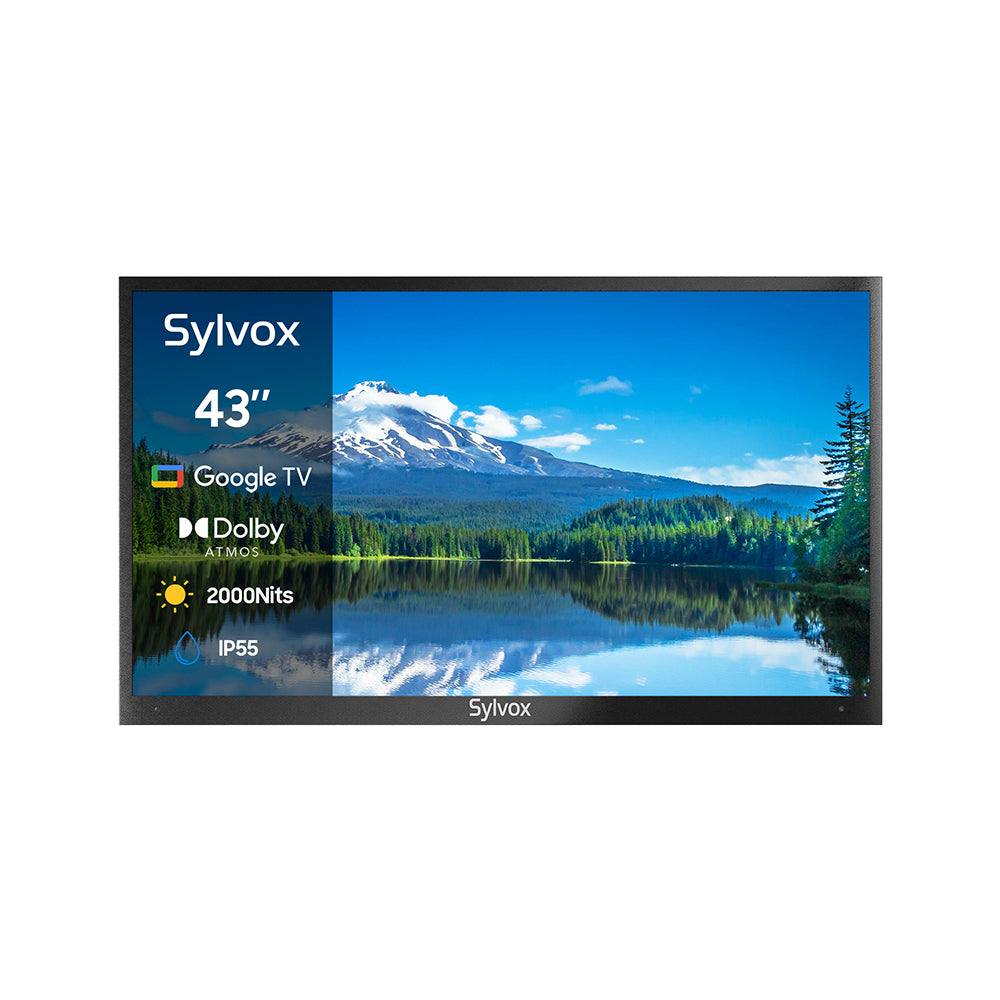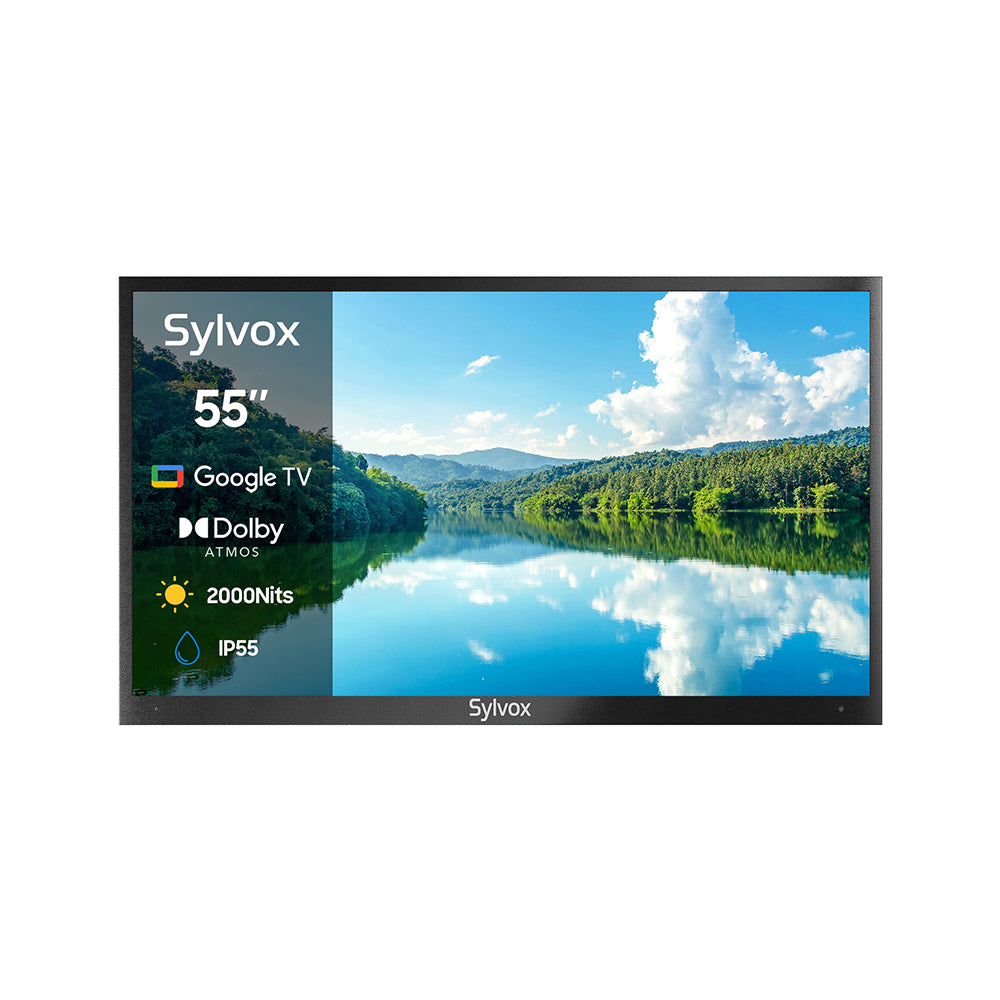What's the Difference and Which is Better: LED vs. QLED vs. OLED?
When you shop for a TV, you'll see QLED, OLED, and LED options. They all look the same when you see them on the display, so which TV should you buy, and what's the difference between them?

Introduction to TV Display Technologies
When it comes to choosing a new television, understanding the different display technologies is crucial. The three most popular options in the market today are LED, QLED, and OLED. Each technology offers unique features and advantages, making it essential to know their differences before making a decision.
LED TVs
LED stands for Light Emitting Diode. LED TVs use an LCD (Liquid Crystal Display) panel that is backlit by LED lights. This technology allows for thinner screens, energy efficiency, and a wider color range compared to traditional LCD TVs. LED TVs are widely available and come in various price points, making them a popular choice for many consumers. However, they may show imperfections in displaying deep blacks, which can affect contrast and overall picture quality.
QLED TVs

QLED TVs use a backlighting system combined with a quantum dot layer to enhance color reproduction and provide superior picture quality. QLED TVs offer similar picture quality to OLED while typically being more affordable. They also use VA (Vertical Alignment) panels that provide a very wide viewing angle and high contrast ratios, ensuring a great viewing experience for everyone in the room.
OLED TVs
OLED, or Organic Light Emitting Diode, TVs are known for their perfect black levels and exceptional picture quality. Rather than using a backlight, each pixel in an OLED panel emits its own light, resulting in true blacks and infinite contrast ratios. This allows for excellent color accuracy, sharpness, and wide viewing angles. OLED TVs are the preferred choice for those seeking the best possible picture quality, although they tend to be more expensive compared to LED and QLED options.
LED TVs: Pros and Cons
LED TVs have gained popularity in recent years due to their advancements in display technology. Let's delve into the pros and cons of LED TVs to understand their advantages and limitations.
Advantages of LED TVs
1. LCD Panels: LED TVs utilize LCD (liquid crystal display) panels, which offer improved brightness and contrast levels compared to traditional CRT displays. This leads to sharper images and more vibrant colors, enhancing the overall viewing experience.

2. Wider Color Range: LED TVs are capable of producing a wider color range, thanks to their backlighting system. This allows for more accurate and vivid color reproduction, resulting in lifelike images.
3. Energy Efficiency: LED TVs are highly energy-efficient compared to other display technologies. They consume less power, reducing both electricity bills and carbon footprint.
4. Slim Design: LED TVs are known for their slim and sleek design. The thin profile adds a touch of elegance to any living space and allows for easy wall-mounting.
Limitations of LED TVs
1. Limited Contrast Ratio: Despite their advancements, LED TVs can struggle to achieve deep black levels, leading to a reduction in contrast ratio. This limitation affects the overall dynamic range and can result in slightly washed-out dark scenes.
2. Uniformity Issues: LED TVs may suffer from certain uniformity issues, such as backlight bleeding or clouding. These issues can manifest as uneven brightness distribution across the screen, especially noticeable in dark or solid-colored scenes.
3. Restricted Viewing Angles: LED TVs typically have limitations when it comes to viewing angles. Watching the screen from extreme angles could result in a loss of color accuracy and reduced picture quality.
4. Price Variations: LED TVs come in various price ranges, from budget-friendly options to high-end models. While affordability is a significant advantage, lower-priced LED TVs might compromise on certain features such as refresh rate or local dimming capabilities.
QLED TVs: Pros and Cons
When it comes to QLED TVs, there are several advantages and drawbacks that you should consider before making a purchase decision. Let's explore the benefits and drawbacks of QLED TVs, with a focus on their quantum dot technology and how they compare to OLED TVs.
Benefits of QLED TVs
1. Vibrant and Wide Color Gamut: QLED TVs utilize quantum dot technology, which allows them to produce a wide color gamut. This means that you can enjoy vivid and vibrant colors that truly bring your content to life.

2. High Brightness and HDR Performance: QLED TVs are known for their impressive brightness levels, making them ideal for bright rooms or environments with a lot of ambient light. Additionally, they offer excellent HDR (High Dynamic Range) performance, delivering enhanced contrast and a wider range of brightness levels.
3. Comparable Picture Quality to OLED: While OLED technology is often praised for its deep blacks and pixel-level contrast, QLED TVs have made significant strides in providing a comparable picture quality. With advancements in backlighting and local dimming technology, QLED TVs can achieve impressive contrast ratios and excellent black levels.
Drawbacks of QLED TVs
1. Narrow Viewing Angles: Compared to OLED TVs, QLED TVs generally have narrower viewing angles. This means that the picture quality may degrade when viewed from the side, making it less ideal for larger gatherings or living room setups where multiple viewers may be seated at various angles.
2. Limited Black Levels: Although QLED TVs have improved their black levels, they are still not as deep and uniform as OLED TVs. If you prioritize absolute black levels and shadow detail in your viewing experience, an OLED TV might be a better choice.
3. Risk of Burn-in: While QLED TVs are not prone to the risk of burn-in like OLED TVs, there may still be some possibility of temporary image retention in certain situations, particularly when displaying static images or logos for extended periods.
QLED TVs offer vibrant colors, high brightness levels, and impressive picture quality, making them a popular choice for many consumers.
OLED TVs: Pros and Cons
OLED (Organic Light Emitting Diode) TVs are known for their exceptional picture quality and innovative display technology. Here, we'll explore the advantages and disadvantages of OLED TVs, showcasing their unique features and considerations for potential buyers.
Advantages of OLED TVs
1. Perfect Black Levels: One of the standout features of OLED TVs is their ability to produce perfect black levels. Unlike LED and QLED TVs, OLED pixels can completely shut off, resulting in deep, rich blacks and excellent contrast that enhances the overall viewing experience.
2. Individual Pixel Control: Each pixel in an OLED display has independent control over brightness, allowing for precise picture quality. This feature enables OLED TVs to display vibrant colors and sharp details, providing a more immersive and lifelike visual experience.
3. Wide Viewing Angle: OLED TVs offer a wider viewing angle compared to LED and QLED displays. This means that viewers can enjoy consistent picture quality, regardless of their seating position in the room. Whether you're sitting directly in front of the TV or off to the side, the colors and contrast remain accurate and vibrant.
4. Thin and Stylish Design: OLED panels are incredibly thin and flexible, allowing manufacturers to create sleek and stylish TV designs. With their slim profiles, OLED TVs can blend seamlessly into any living space and offer a modern aesthetic.
Disadvantages of OLED TVs
1. Limited Brightness: While OLED TVs excel in delivering deep blacks, their brightness capabilities are not as high as LED and QLED displays. This limitation can affect the visibility of certain content in well-lit rooms or environments with a lot of natural light.
2. Risk of Burn-in: OLED TVs are susceptible to screen burn-in, which occurs when static images are displayed for extended periods. If a static image is left on the screen for too long, it can create a persistent ghost image that diminishes the overall picture quality. However, this issue has been significantly minimized with newer OLED models, incorporating preventive measures to reduce the risk of burn-in.
3. Higher Price Point: OLED TVs are generally more expensive compared to LED and QLED models. The manufacturing process for OLED panels is complex and costly, contributing to the higher price tag.
Picture Quality Comparison
Picture quality is one of the most important factors to consider.
Contrast Ratio
Contrast ratio refers to the difference between the darkest blacks and the brightest whites a TV can display. In this aspect, OLED TVs have a clear advantage. As each pixel in an OLED panel can independently emit light or completely turn off, OLED TVs can achieve perfect black levels and infinite contrast ratios. This results in incredibly realistic and immersive image quality, especially in dark scenes.
LED and QLED TVs, on the other hand, rely on LED backlighting to illuminate the screen. While LED backlighting can provide bright and vibrant images, it can also result in less accurate black levels and limited contrast ratios in comparison to OLED.
Black Uniformity
Black uniformity refers to how evenly a TV displays black color across the screen. Again, OLED TVs excel in this aspect due to their ability to turn off individual pixels. This ensures that there is minimal blooming or backlight bleed in dark scenes, providing a more uniform and immersive viewing experience.
LED and QLED TVs, especially those using VA (Vertical Alignment) panels, commonly exhibit some level of black uniformity issues. This can result in a slight grayish or uneven appearance in dark areas of the screen.
Color Volume
Color volume refers to the range of colors a TV can reproduce at varying brightness levels. Both QLED and OLED TVs offer wide color gamuts, capable of displaying vibrant and accurate colors.
QLED TVs achieve this by utilizing quantum dot technology, which enhances color accuracy and provides a wider color spectrum. While OLED TVs also offer excellent color reproduction, QLED TVs generally have a slight edge in terms of color volume due to the enhanced color technologies used.
Response Time
Response time measures how quickly a TV can transition from one color to another. For fast-paced content like action movies or sports, a low response time is crucial to avoid motion blur.
LED and QLED TVs typically have faster response times compared to OLED TVs. This is because OLED panels have a slower pixel response time, resulting in slightly more motion blur during fast-moving scenes.

Price and Value
Price and value are important factors.
LED TVs
LED TVs are known for their affordability. They are the most budget-friendly option among the three technologies. LED TVs use LCD panels with LED backlighting, which allows for a wider range of colors compared to traditional LCD TVs. LED TVs offer good picture quality and are suitable for those with a limited budget or who prioritize cost-effectiveness.
QLED TVs
QLED TVs, on the other hand, sit in the mid-range in terms of pricing. These TVs utilize quantum dot technology, which enhances color performance and offers similar picture quality to OLED TVs. QLED TVs are a popular choice for those seeking a balance between performance and price.
OLED TVs
OLED TVs are considered the high-end option in terms of pricing. These TVs use organic light-emitting diode (OLED) panels, which offer perfect black levels and individual pixel control. The picture quality of OLED TVs is well-regarded, delivering vibrant colors, deep blacks, and excellent contrast ratios. If you're willing to invest in top-of-the-line technology and prioritize a premium viewing experience, OLED TVs are the way to go.
It's worth noting that the prices of all three TV technologies can vary based on factors such as screen size, brand, and additional features. Consider your budget and the level of quality you desire when making a decision.
Personal Recommendations and Best Uses

When it comes to choosing the best TV for your needs, it's essential to consider your individual preferences and specific use cases. Here are some recommendations for LED, QLED, and OLED TVs based on different scenarios:
LED TVs:
1. Budget-Friendly Option: LED TVs are generally more affordable than QLED and OLED models, making them a great choice for those on a budget.
2. Bright Rooms: LED TVs excel in bright environments such as living rooms with ample natural light or spaces with multiple windows. The LED backlighting technology ensures excellent visibility even in well-lit areas.
3. Casual Viewing: If you primarily use your TV for casual viewing, such as catching up on your favorite sitcoms or browsing through streaming services, LED TVs offer a reliable and cost-effective option.
QLED TVs:
1. Home Theater Experience: QLED TVs boast vibrant colors and excellent contrast, making them perfect for creating a home theater experience. The quantum dot technology enhances color reproduction and delivers stunning visuals.
2. Gaming: If you're an avid gamer, QLED TVs with their QLED panels and high refresh rates provide smooth gameplay and beautiful graphics. The fast response time minimizes motion blur, offering an immersive gaming experience.
3. Wide Viewing Angles: QLED TVs typically offer wider viewing angles compared to LED models, making them suitable for rooms where multiple viewers often gather.
OLED TVs:
1. Cinematic Experience: OLED TVs are known for their perfect black levels and exceptional contrast, providing a cinematic viewing experience. The individual pixel control ensures precise detailing in dark scenes, offering unmatched picture quality.
2. Film and TV Enthusiasts: If you're a film or TV enthusiast, OLED TVs are an ideal choice. They bring out the true colors, allowing you to experience the content as intended by the creators.
3. Dimly Lit Rooms: OLED TVs perform exceptionally well in dimly lit rooms, where the perfect black levels create a captivating visual experience. They are well-suited for dedicated media rooms or bedrooms where controlling ambient light is possible.
Remember, these recommendations are based on general considerations, and it's important to evaluate specific models and features before making a final decision. By considering your usage patterns, viewing habits, and preferred features, you can select the TV technology that best meets your needs.











9k53mi
mhhfd4
As I watch a lot of sports which has the sky sports logo teams and score on the screen. Can I consider an oled tv or would screen burn be a problem. Or should I consider qled instead. Thanks.
———
Sylvox UK:
1. OLED: Risk of Screen Burn-In
Advantages:
Best Picture Quality: OLED’s self-emissive pixel technology delivers deep blacks and infinite contrast, making it ideal for dynamic scenes such as sports.
Wider Viewing Angles: The picture remains clear even when viewed from the side.
Disadvantages:
Risk of Screen Burn-In: Static images (such as logos or scoreboards) displayed for extended periods can lead to screen burn-in. While modern OLED TVs incorporate technologies like pixel shifting to mitigate this risk, it cannot be entirely eliminated.
2. QLED: Higher Safety and Durability
Advantages:
Bright and Rich Colors: QLED (Quantum Dot LED) TVs use backlight technology, offering higher brightness levels, which is great for viewing in bright environments.
No Risk of Burn-In: QLED is unaffected by static images, making it ideal for long periods of content with fixed elements like logos or scoreboards.
Disadvantages:
Slightly Inferior Black Levels: While QLED TVs deliver excellent contrast, they cannot match the absolute black levels of OLED TVs.
3. Recommendations for Your Needs
If you often display static content (like logos or scoreboards):
QLED is the safer choice. It provides vibrant colors and excellent brightness without the risk of burn-in, making it particularly suitable for watching sports for extended periods.
If you prioritize top-tier picture quality and can manage burn-in risks:
You can choose OLED, but you’ll need to:
Avoid displaying static images for too long.
Occasionally switch content or ensure the TV supports features like pixel refresh or screen savers to reduce burn-in risks.
Conclusion:
If screen burn-in is your primary concern, QLED TVs are the better option. For example, Sylvox’s QLED outdoor TVs combine high brightness and vivid colors, making them perfect for enjoying sports.
However, if you’re focused on achieving the best possible picture quality and can carefully manage static images, OLED TVs can still be a suitable choice.
Great content and brilliant insight into the general function of each type of these TV’s, (LED,QLED OLED)
Also good bits of advice and information to potential buyers of what the three types of TV’s mentioned for capability.
Thank you so much. Don McAllister.
I found this article really helpful and now understand the difference between the three technologies and have a better idea of what suits me best.
Leave a comment